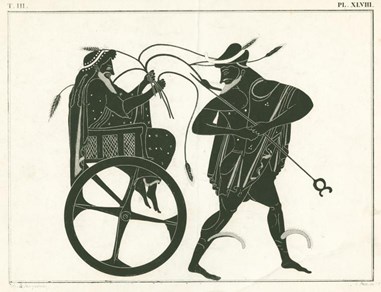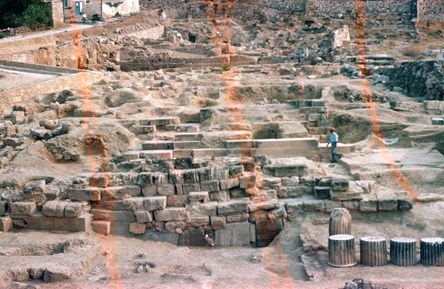The sacred herald
The herald (Sacred Herald in the Roman period) required a loud and clear voice. His primary responsibility was to read the proclamation to the crowd gathered in front of the Poikile Stoa on the first day of the Greater Mysteries in Athens. He also ordered the mystai never to reveal the content of the Mysteries and generally remain silent whenever necessary. During the sacred performance in Eleusis, he played the role of Hermes. He was also a mystagogos and received half an obol per day from each initiate. Like other high-ranking officials of the Mysteries, he was aeisitos (fed in the Prytaneion at public expense) for life. He also had the right to erect a statue in the sanctuary. He came from the genos of the Kerykes.

Triptolemus, seated in chariot, preceded by Hermes, Louis Petit, ca. 18…





